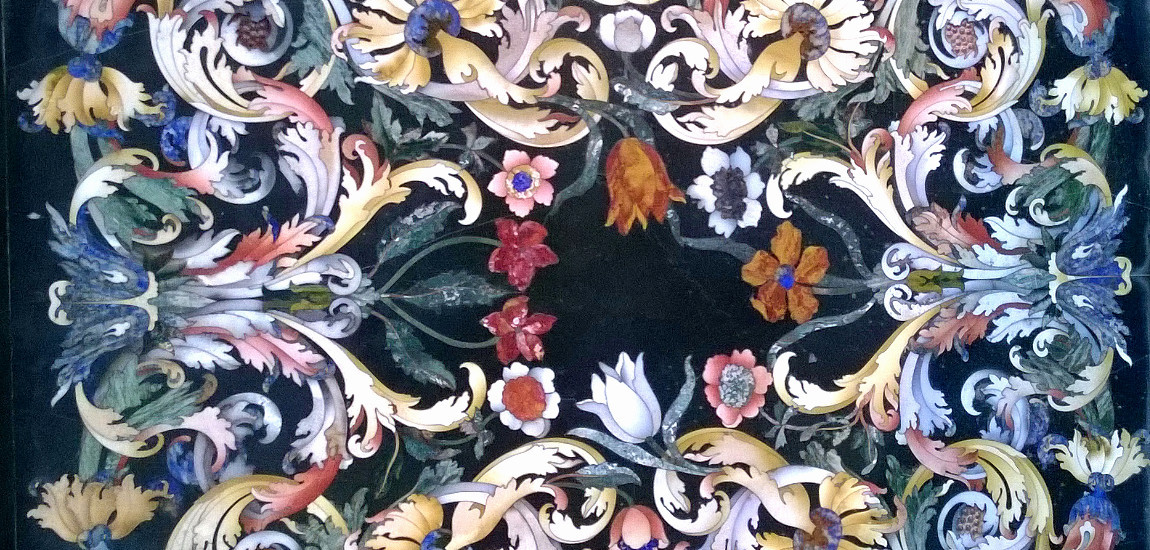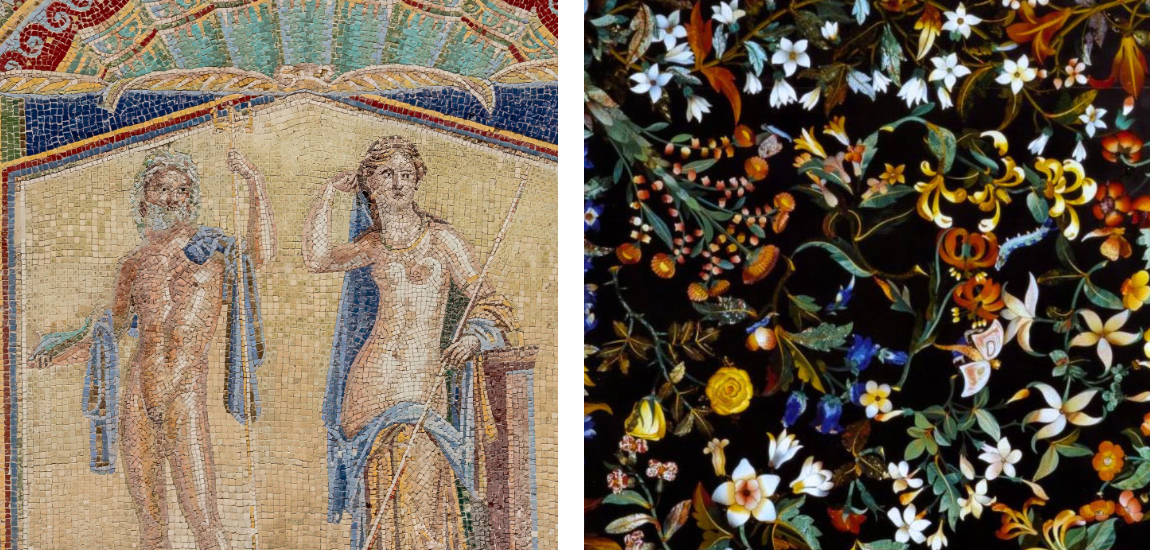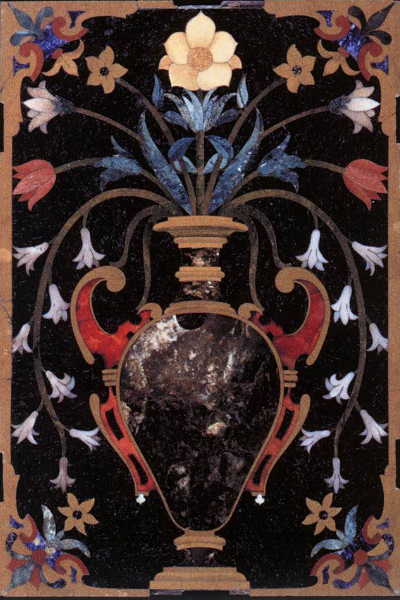
Ancient techniques: Commesso Fiorentino
The Commesso
Fiorentino, or Florentine mosaic, is a decorative technique that is often
confused with the Roman mosaic from which it originates, and was used to create
paintings, decorate furniture such as tables and chests of drawers or for wall
coverings.
The word “commesso”
derives from the Latin verb “committere”,
meaning “to put together/unite”. It indicates
a type of mosaic that allows for the creation of extremely refined and detailed
compositions.
The substantial difference between the two techniques lies
in the cut of the tiles: while in mosaic tiles are geometric in shape
(generally squared), allowing for a limited rendering of details and nuances,
in Commesso Fiorentino the stones are chosen based on the design, shaped with
precision and placed together in such a way as to adapt to the design and
create very realistic images.
The “commettitori”
were highly skilled craftsmen and extremely expert in recognizing the pictorial
potential of the stones and using their natural colors to achieve results of
great pictorial realism.
It is therefore not surprising that this technique was
chosen to decorate the sumptuous Cappella dei Principi, the mausoleum of the
Grand Dukes of Tuscany and their families in the Basilica of San Lorenzo.
This chapel, an idea of Cosimo I de' Medici, was later
built thanks to Grand Duke Ferdinando I,
who brought together the various workshops specializing in the processing of
semi-precious stones under the name of Galleria dei Lavori in 1588, later known as the Opificio delle Pietre Dure, the first
example in Europe of artistic manufacturing at the service of a ruling family,
the Medici family.
The decoration of the Cappella dei Principi was the
first project of the Opificio delle Pietre Dure, a work so grandiose that it
took hundreds of years to finish. Literally. The flooring was only completed in
1962!

Example of Roman mosaic on the left and Commesso Fiorentino on the right.
To produce works with the Florentine mosaic technique, a preparatory drawing is first created on the basis of which the stones that are to be used and cut are chosen. Marble, colored granite, porphyry, lapis lazuli, mother-of-pearl and other suitable materials are carefully chosen according to aesthetic and functional criteria for the work, after which they are cut following the lines of the preparatory drawing. The cutting is done with a chestnut wood bow, a curved twig that stretches a metal wire. This wire is moved back and forth, aiding the cut with a mixture of water and abrasive powder. The pieces thus prepared are then fitted together like a puzzle and glued to the support. Finally, they are polished.
To this day, this ancient art is passed down thanks to the work of the Opificio delle Pietre Dure and some ancient workshops that remain in the city. In these workshops, the cutting of the stones is still done manually with the bow, while electric saws are used in the restoration workshops of the Florentine Opificio. Apart from this, this ancient technique has remained almost unchanged after all these centuries and remains a source of pride that’s all Florentine.




